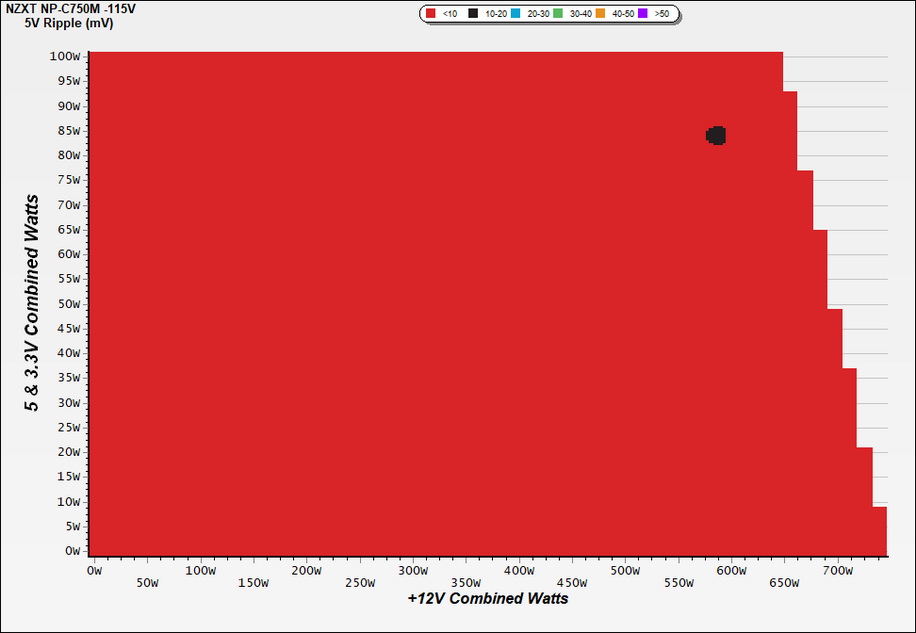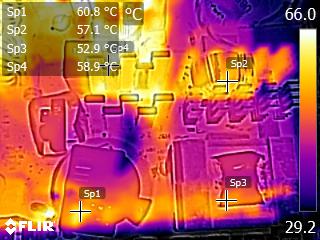Why you can trust Tom's Hardware
Protection Features
Check out our PSUs 101 article to learn more about PSU protection features.
|
Protection Features | |
|
OCP |
12V: 87.2A (140.65%), 11.909V |
|
OPP |
1051.81W (141.37%) |
|
OTP | ✓ (142.5°C ambient) |
|
SCP |
12V: ✓ |
|
PWR_OK |
Proper Operation |
|
NLO |
✓ |
|
SIP |
Surge: MOV |
The 12V rail has its over current protection triggering point set high, but this doesn't seem to bring any problems. The same goes for OPP. Seasonic wanted to avoid compatibility issues with some GPUs that have high power spikes, so it allowed for higher OCP at 12V. The minor rails have lower OCP triggering points. Lastly, there is over-temperature protection, which is among the most critical protection features, especially in power supplies.
DC Power Sequencing
According to Intel’s most recent Power Supply Design Guide (revision 1.4), the +12V and 5V outputs must be equal to or greater than the 3.3V rail at all times. Unfortunately, Intel doesn't mention why it is so important to always keep the 3.3V rail's voltage lower than the levels of the other two outputs.

DC Power Sequencing Scope Shots


The 3.3V rail is always lower than the other two, as the ATX spec requires.
Cross Load Tests
To generate the following charts, we set our loaders to auto mode through custom-made software before trying more than 25,000 possible load combinations with the +12V, 5V, and 3.3V rails. The deviations in each of the charts below are calculated by taking the nominal values of the rails (12V, 5V, and 3.3V) as point zero. The ambient temperature during testing was between 30 to 32 degrees Celsius (86 to 89.6 degrees Fahrenheit).
Load Regulation Charts

Load Regulation Charts


Efficiency Chart
Ripple Charts
The lower the power supply's ripple, the more stable the system will be, and less stress will also be applied to its components.

Ripple Suppression Charts



Infrared Images
We apply a half-load for 10 minutes with the PSU's top cover and cooling fan removed before taking photos with a modified FLIR E4 camera able to deliver an IR resolution of 320x240 (76,800 pixels).
Get Tom's Hardware's best news and in-depth reviews, straight to your inbox.

IR Images





The hottest part is the main transformer. The secondary side operates at pretty low temperatures, as you can see in the IR images above.
MORE: Best Power Supplies
MORE: How We Test Power Supplies
MORE: All Power Supply Content
Current page: Protection Features, Leakage Current, DC Power Sequencing, Cross-Load Tests and Infrared Images
Prev Page Load Regulation, Hold-Up Time, Inrush Current, Efficiency and Noise Next Page Transient Response Tests, Timing Tests, Ripple Measurements and EMC Pre-Compliance Testing
Aris Mpitziopoulos is a contributing editor at Tom's Hardware, covering PSUs.
